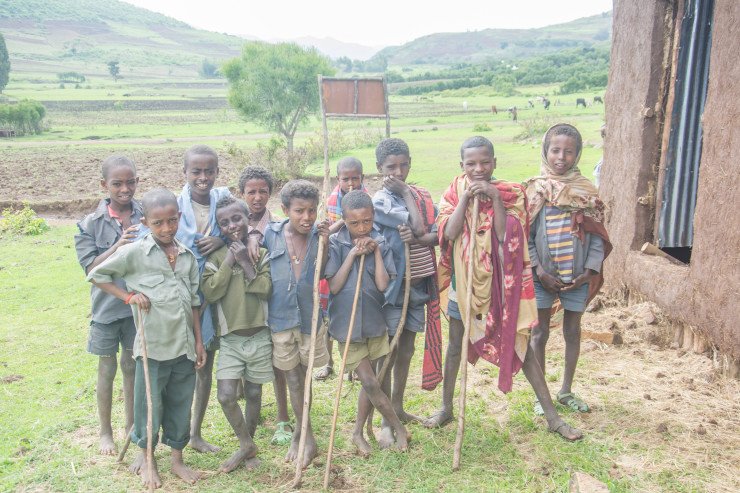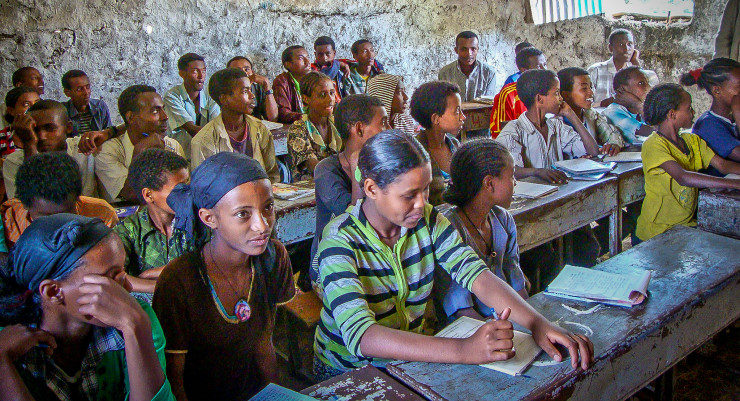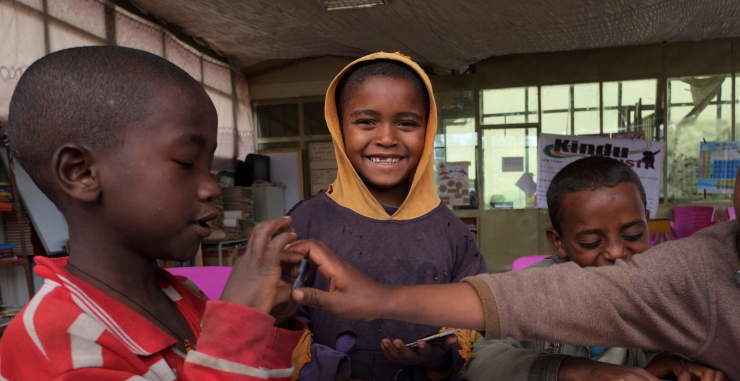Written by Malak Azer.
At Link Ethiopia, our aim has always been to help provide good quality education to poor children in Ethiopia, in order to assist them in accessing better opportunities in the future. This not only transforms their own lives but also causes entire communities to thrive and prosper.
As our world develops at rapid speed and becomes more interconnected, it is important to keep up by adopting a more global and culturally aware outlook. Developing countries especially are experiencing the benefits of globalization more acutely, as stronger interchange and integration leads their economies down a path of rapid expansion. However, as we have seen happen in the world’s most developed countries, with greater economic growth comes greater levels of inequality, and this is undoubtedly true of Ethiopia. Although the IMF has deemed the Ethiopian economy as one of the five fastest growing economies in the world, great disparities exist between life in the capital city Addis Ababa, and that in smaller cities and more rural areas.

Thus, in the towns where Link Ethiopia works, such as Bishoftu in the south, there still exists high levels of poverty, with mothers struggling to obtain food, large families cramped in tiny homes, and children begging on the streets instead of being in education. Where there are schools many are shabby-looking with dusty interiors, where children sit on the broken furniture and have limited resources. This is why we introduced our new Global Learning Project, but we need the help of UK schools to ensure that it achieves its goal of improving the lives of Ethiopia’s poorest and most vulnerable children through the provision of high-quality education.
Link Ethiopia has now been running an incredible School Link programme for over 20 years, where schools, students, and teachers in the UK can connect to their Ethiopian counterparts, forging a strong and mutually beneficial relationship by sharing resources and participating in joint projects. Alongside this fascinating school linking, our Global Learning Project has the same goals in mind, but on a smaller scale. This project gives schools in the UK the opportunity to link their fundraising efforts to a real, meaningful project being undertaken by Link Ethiopia in the country, but it is a one-off opportunity and does not require a sustained commitment nor a linking fee. Apart from aiming to improve learning conditions in schools in Ethiopia, this Global Learning Project also makes children in the UK more aware of how interconnected our world is, how rapidly globalization is occurring, and the implications of such intense growth, development, and integration.
Link Ethiopia supports schools all the way through their participation in both the School Link project, and the Global Learning Project. We provide online resources to share between schools, numerous ideas on fundraising, a handbook and guidance materials, and keep UK schools updated throughout on the progress occurring in Ethiopia and the direct impact of their inspiring efforts. For the Global Learning Project, we have created a Global Learning pack, which includes several lesson plans, project packs, fun activities, and an informative poster.
A huge part of why our Global Learning pack is a success is the illustrated poster, created by Toby Mobbs, an illustrator based in Hertfordshire, England. Link Ethiopia recently had the pleasure of asking Toby a few questions about his poster, his illustration process, and more generally about the incredibly interconnected world we find ourselves living in.
1- Where did you find inspiration for the poster? 
I found the main direction for the poster by looking through photos taken by members of Link Ethiopia, showing how the resources provided by fund raising help in Ethiopian communities. I found the optimism in all people involved to be the most defining thing expressed in them.
2- What mediums and tools did you use?
I used Adobe Photoshop CS3 and a Wacom Intuous tablet for the illustration and hand drawn text, as well as a variety of photographed materials and textures.
3-How long does it take you to complete a project such as this one?
In any collaborative project it is important to work closely with a client to define the intention of the design. This tends to mean discussion until an ideal concept is reached.
4- How much time do you spend thinking/ visualizing before you actually pick up your pen?
The pen tends to get picked up as I’m thinking and visualising! I will tend to sketch concepts and layouts as well as ideas to pursue when coming up with a defined design.
5- What is your favorite thing about this poster?
Its sense of appeal and friendliness, while retaining its informative goal.
6- What is the specific message you are trying to deliver through this poster?
I believe the poster helps to convey the multitude of ways communities in need can be aided, enriching the lives of those who live in them.
7- Has your style evolved over time or has it remained fairly constant?
I find that pursuing a specific style is quite constraining for me, personally. Many other artists have more defined visions, which is always excellent to see. But I find adaptability to be a very worthy pursuit in itself.
8- Where do you find inspiration for your illustrations?
Usually in the brief! Having defined parameters always gives me a conceptual canvas to pursue interesting ways of realising a concept.
9- Do your illustrations usually tackle development and other global issues?
They have not usually, but on a personal level I find it important to follow global events and issues. It may yet be a subject I pursue further.
10- Do you prefer illustrating for children? Why or why not?
As with any illustration or media project, communicating to a specific audience brings its own considerations and challenges. With children, that tends to mean having to inject a sense of fun into what you do, which naturally makes it enjoyable!
11- Do you have certain themes that you prefer to illustrate?
Variety appeals to me greatly, and I like to try my hand at many different subjects and themes. Though currently I find positive and progressive subjects to be the main part of what I have worked on lately.
12- Tell us a bit about yourself and where you’re from?
I am an artist and designer based in Hertfordshire, trying my hand at as many interesting projects as I can! I spend my time working independently on a number of different projects in multiple mediums, which I find very rewarding.
13- Where and what did you study?
I studied BA Illustration at the University of Lincoln.
14- Do you believe illustration could have an impact on global policies?
I believe that illustration can serve to communicate complex ideas in a simple, witty and intuitive way. As ideas become condensed in the world of quick fire social media posts, illustration absolutely has its place.
15- What is your number 1 tip for an artist just starting out?
Whatever it is you pursue; painting, designing, photography, anything. do it every day! And while you’re at it, talk to other artists. You can learn a lot by sharing your progress with others and being open to constructive criticism.
16- What kind of illustration projects are you most interested in?
Ones that attempt to express ideas that are hard to concisely sum up in words. As well as ones with themes that touch on interesting imagery.
17- What projects are you currently working on?
I am currently developing a series of workshops to teach children and young people animation and film making skills.
18- What were/are your favorite children’s illustrated books?
James and the Giant Peach by Roald Dahl and illustrated by Quentin Blake, Sinbad the Sailor by Marcia Williams and Asterix and Obelix by Goscinny and Uderzo.
19- If you could make mandatory one thing for all children to learn at school, what would that be?
The value of being able to create things from scratch, whether it’s physical objects, art, media or writing. As well as teaching how this has, and continues, to define the world we live in.
Toby’s Poster
Thank you Toby- We hope his powerful words and impressive skills will inspire all young people to pursue their dreams and work hard to make them reality! If you want to get in touch with Toby, you can do that on his work email [email protected].
Apart from our School Linking and the Global Learning Project, we have other ways you can help support young people who are trying to attain greatness and pursue their passion. Why not consider participating in Link Ethiopia’s Child Sponsorship programme? It enables young Ethiopians to stay in school and work towards their goals, but this can only be done with your support!




